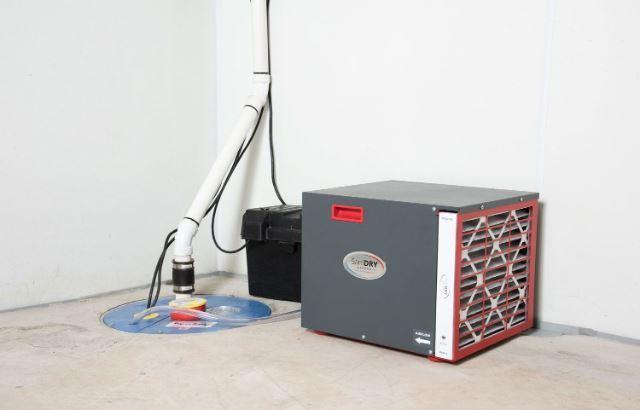Leading Steps for Servicing Your Sump Pump
Leading Steps for Servicing Your Sump Pump
Blog Article
We've discovered this great article pertaining to How to Care for Your Sump Pump below on the web and think it made sense to share it with you here.

Sump pumps are important components in several homes, particularly in locations susceptible to flooding or excessive wetness. They aid prevent water damage by successfully removing excess water from basements or crawl spaces. Nevertheless, like any other appliance, sump pumps call for regular maintenance to guarantee they work efficiently when needed one of the most. Cleansing your sump pump is a vital part of its maintenance, and understanding just how to do it appropriately can conserve you from pricey repairs and potential catastrophes.
Intro
Maintaining a tidy sump pump is crucial for its appropriate functioning and longevity. Ignoring this essential task can result in obstructions, breakdowns, and inevitably, water damages to your residential property. Therefore, learning just how to clean a sump pump is crucial for home owners who depend on these devices to maintain their cellars completely dry and secured.
Comprehending the Sump Pump
Prior to diving into the cleansing procedure, it's essential to have a standard understanding of exactly how a sump pump functions. Generally mounted in a pit or container below the cellar floor, a sump pump contains numerous key components, consisting of a pump, a float switch, and a discharge pipe. When water collects in the pit, the float switch turns on the pump, which then pumps the water out via the discharge pipe, away from the structure's foundation.
Indicators of a Dirty Sump Pump
Understanding when your sump pump requires cleaning is crucial for avoiding possible malfunctions. Some common signs that suggest a filthy sump pump include unusual noises throughout operation, decreased water flow, and noticeable particles in the pit. If you discover any one of these signs and symptoms, it's important to cleanse your sump pump without delay to prevent any further issues.
Getting ready for Cleaning
Prior to you begin cleaning your sump pump, it's vital to take some security precautions. Beginning by shutting off the power to the pump to avoid any type of electric accidents. In addition, wear suitable safety equipment, such as handwear covers and goggles, to secure yourself from dirt, particles, and prospective microorganisms.
Detailed Guide to Cleansing a Sump Pump
Shutting Off the Power
Begin by separating the power supply to the sump pump to prevent any type of mishaps while cleaning.
Removing Debris and Dirt
Use a bucket or a scoop to remove any visible particles, dust, or debris from the sump pit. Dispose of the debris effectively to avoid it from obstructing the pump or the discharge pipe.
Cleaning up the Pump and Drift Switch
When the pit is free from debris, very carefully get rid of the pump from the pit. Inspect the pump and the float button for any kind of indications of damages or wear. Utilize a soft brush or towel to clean up the surfaces and remove any gathered gunk.
Flushing the System
After cleaning up the pump and float switch, flush the sump pit with tidy water to get rid of any type of remaining dirt or debris. This will aid ensure that the pump runs smoothly and effectively.
Looking For Appropriate Performance
Before re-installing the pump, execute a fast examination to ensure that the float button activates the pump properly. Pour some water right into the sump pit and observe the pump's operation. If whatever is working properly, you can reconstruct the pump and reconnect the power supply.
Maintenance Tips to Keep Your Sump Pump Clean
Along with periodic cleansing, there are a number of upkeep suggestions you can comply with to maintain your sump pump in optimal problem:
Verdict
Cleaning your sump pump is a critical element of its maintenance and makes sure that it runs successfully when you require it the most. By following the actions laid out in this overview and integrating regular upkeep into your regimen, you can prolong the life-span of your sump pump and protect your home from water damages.
6 STEPS ON HOW TO CLEAN A SUMP PUMP PROPERLY
UNDERSTANDING SUMP PUMPS
Your sump pump plays a crucial role in protecting your home by managing and removing excess water. It primarily functions as a “shield”, guarding your basement against the damaging effects of water accumulation. The pump is housed in a sump pit in the lowest part of your basement, and its job is to pump out any water that collects there.
During heavy rainfalls or when snow melts rapidly, water can infiltrate your basement, posing potential risks like flooding, structural damage, and harmful mold growth. Here, the sump pump springs into action, pumping out the intruding water and directing it away from your home.
SAFETY FIRST
Before cleaning, remember to prioritize safety. Disconnect the sump pump from the power source to prevent any accidental electric shocks. Also, wear sturdy gloves to protect your hands from any sharp or dirty components within the pump.
REMOVE THE SUMP PUMP
After ensuring your safety, the next step is to remove the sump pump from its pit. Doing this might require careful maneuvering as you don’t want to damage any pump components. Once removed, clean the sump pit to remove any accumulated debris or sludge.
INSPECT THE PUMP
Inspect the pump for any visible signs of wear or damage. Check the power cord, float switch, and impeller housing. If any components look worn out or damaged, consider replacing them to ensure optimal performance.
CLEAN THE PUMP
Thoroughly clean the pump with warm, soapy water. Make sure to rid it of any dirt, gravel, or other debris that might impede its performance. You can use a toothbrush to clean the small, hard-to-reach parts of the pump.
REINSTALL THE SUMP PUMP
Reinstall the pump into the sump pit Make sure it’s positioned correctly to remove the water effectively Once it’s back in place, reconnect it to the power source TEST THE PUMP
Finally, pour some water into the pit to ensure the pump works correctly. It should start automatically and begin pumping out the water; if it doesn’t, check the power source and the positioning of the pump.
Remember, while cleaning your sump pump is an essential part of home maintenance, hiring a professional plumber for a thorough inspection and cleaning at least once a year is also important. This will ensure that your pump is in optimal condition, ready to protect your home from potential water damage.
BEST PRACTICES FOR CLEANING SUMP PUMP DISCHARGE PIPES
Regular Inspection: Regularly inspect your discharge pipes, especially during heavy rainfall or snowmelt periods. Look for any signs of blockage or damage. Early detection of problems can prevent serious issues down the line. Periodic Cleaning: Over time, sediment and debris can accumulate in the discharge pipes, impeding the flow of water. Regular cleaning helps keep the pipes clear and functioning efficiently. You can use a high-pressure water jet to effectively clean the pipes. Insulation During Winter: In colder climates, discharge pipes can freeze, blocking the outflow of water. Protect your discharge pipes from freezing temperatures by insulating them with foam pipe insulation. This will ensure the sump pump can continue to discharge water even in freezing conditions. Proper Positioning: The discharge pipe should be positioned to direct water away from your home’s foundation. Improper positioning can lead to water seeping back into the basement. Ensure the pipe is long enough and angled correctly. Installation of a Check Valve: A check valve prevents water from flowing back into your sump pit after the pump has pushed it out. Installing a check valve helps maintain the efficiency of your sump pump and reduces the risk of flooding. Minimize Pipe Turns: Every curve or turn in the discharge pipe can decrease the efficiency of water flow. By minimizing turns and bends in your discharge pipe, you can increase the efficiency of your sump pump. https://www.fullspeedplumbing.com/how-to-clean-a-sump-pump-properly9999/

I am just very serious about How to Care for Your Sump Pump and I really hope you liked the new post. In case you appreciated our blog posting please don't forget to pass it around. We cherish your readership.
Click For More Info Report this page